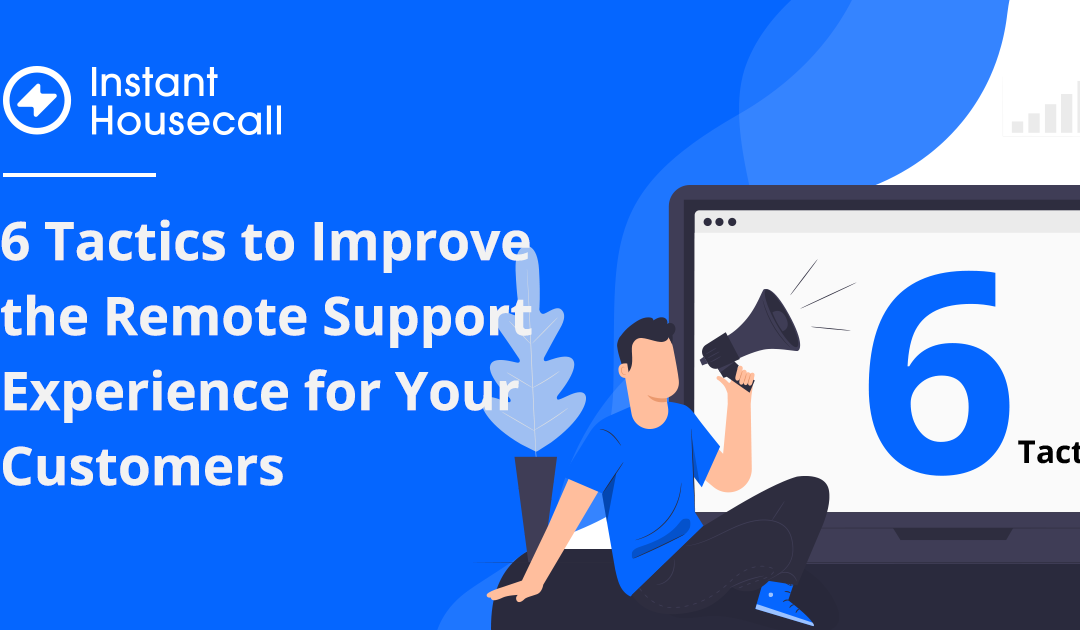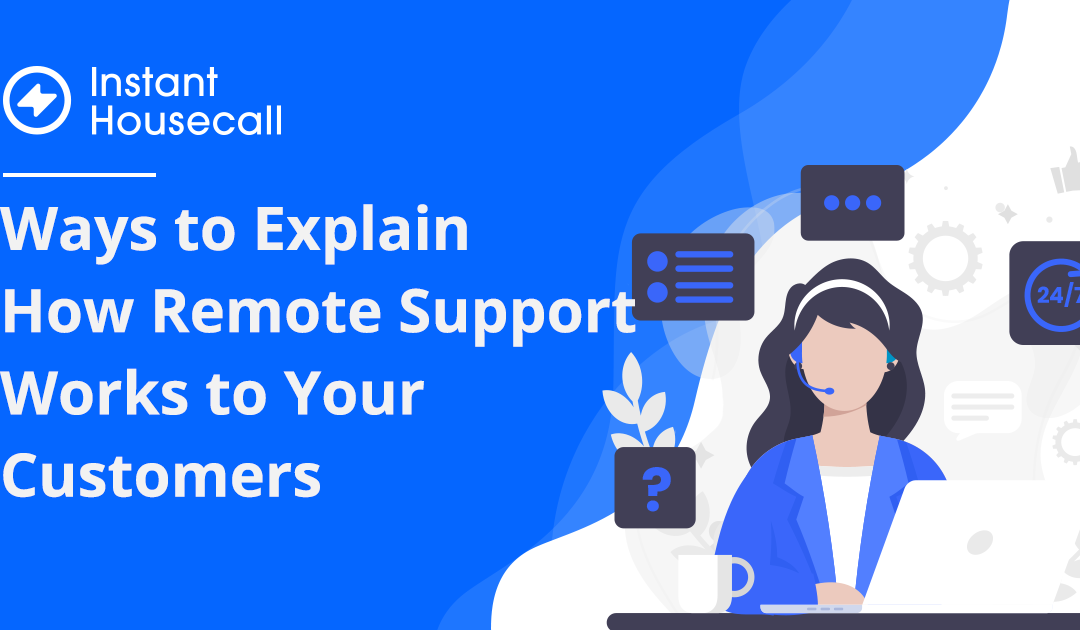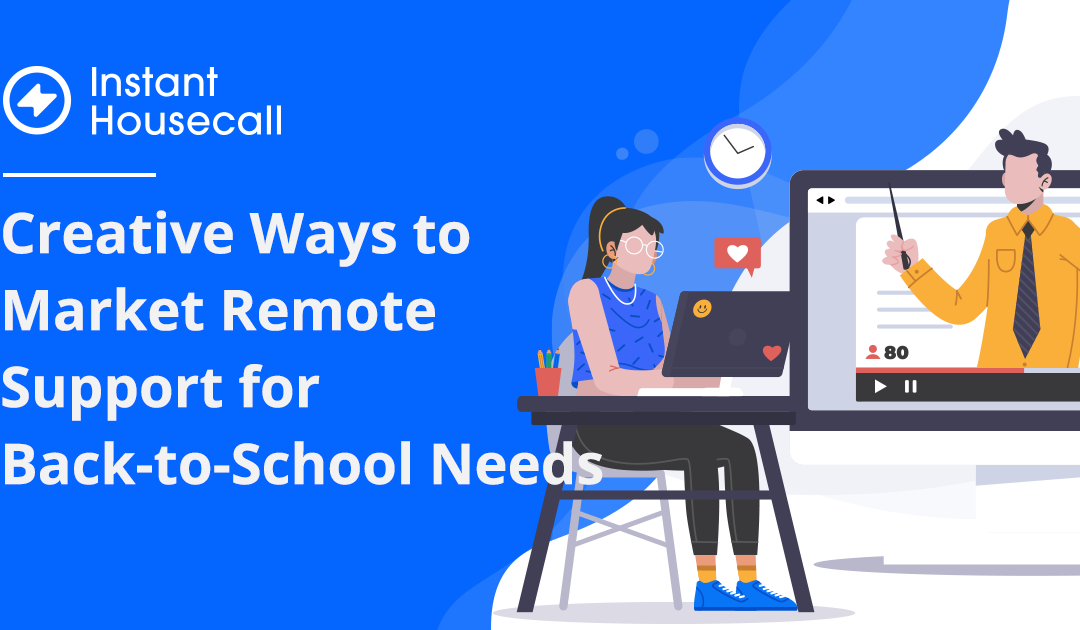
Nov 8, 2021 | Marketing
Do you ever feel like you’re spending time and money on lead generation, but you’re not getting the leads that are converting? Getting poor leads or ones that don’t truly need what you’re offering can frustrate any IT business owner and cause them to rethink their marketing spend.
If you’re getting leads for your remote support business, but those leads aren’t buying, then you could be missing the mark on your lead targeting. In essence, you’re casting too wide a net to bring in every type of lead there is. This results in you spending time and money responding to incoming leads, only to find out they really aren’t all that interested and not in need of what you’re offering.
Honing your lead targeting can help you reduce your number of “junk leads” and improve your conversion rate for a lead to a sale. Another benefit is a savings of both time and money because your team will be spending more of their inquiry follow-up time with people that are actually interested and can use what you’re selling.
Here are some of the questions to ask that can help you fine-tune the way you market so you can reach more qualified leads.
Do You Know Your Target Audiences?
You can’t target the right people or industries if you haven’t defined your target audiences for your remote support services.
If you’re a bit fuzzy on your exact target audiences or just think of them in general terms, such as, “Any business that wants to use our remote services,” then you haven’t narrowed down your audiences enough.
Think about things such as:
- Main industries that would need remote support
- B2B, B2C, or both?
- Customer size
- Geographic location
- Demographics (companies with remote employees, schools doing remote teaching, etc.)
A good way to get started identifying your target audiences is to look at your client list. Break down your current customers into those specifics listed above.
Once you know your target audiences, you can begin honing your marketing for them and more easily identify a hot lead from one of those audiences when it comes in.
Is The Size of the Customer Right?
Because remote support is less costly to provide than in-person IT support, you may have a wide range for the size of customers that you are targeting. However, it’s still a good idea to think about this, because if you are advertising on any social media platforms, they will have target demographics on income and company size that you can use to find the right audience.
Do They Prioritize IT?
If a lead doesn’t prioritize IT or see the value in spending much money on it, then they may be a lower priority lead or require a different message than leads that do understand how important it is to have well-optimized technology.
You can determine this through introductory questions, such as:
- “Have you ever used managed IT services?”
- “When is the last time you contacted an IT provider”
- “Do you have an IT budget, or do you just spend money on technology as needed?”
Do They Have an In-House IT Team?
If a company already has an in-house IT team, that doesn’t necessarily mean that they aren’t a good target customer, it just means that they may not need your services quite as much.
Knowing whether or not a company already has an in-house IT team or person is important because you will want to deliver a completely different remote support sales pitch to companies that have someone onsite that’s already in charge of their IT. Such as promoting your services as a way to tap into expanded expertise.
Are You Focused on the Right Marketing Mediums?
Content marketing has been found to generate three times as many leads as outbound marketing, plus cost 62% less.
If your lead generation isn’t bringing you enough qualified leads, it could be due to not using enough “pull marketing.” Content marketing is a form of pull marketing, where you are putting out helpful content for people to find on their own to be drawn to your website where they will hopefully convert to a lead.
If you are doing mainly traditional marketing, which is more advertising-focused, then you may want to add some content marketing into the mix.
Are Your Systems Set Up to Identify Your Audiences?
Do you have a way of identifying leads from your target audiences when they call or fill out an online form? Doing this upfront can help you tailor the remote support message that you provide to them.
For example, if a lead is in the accounting or banking industry, you might want to highlight the security and compliance features of your remote support software. For a small business owner, you may want to focus on how cost-effective this type of IT support can be.
Use options in a lead form and simple questions, such as, “What industry do you work in?” to identify audiences as soon as they contact you so you can nurture those leads appropriately.
Use a Remote Software That Gives You Plenty to Brag About
Instant Housecall remote support software has multiple features that include encryption, time windows, and more, that you can use when marketing to different target audiences.
Try Instant Housecall risk-free for 15 days and experience it for yourself! Try it out now.

Oct 18, 2021 | Marketing
Generating new leads is always a main priority for any business. If you have a local IT business, then it can be even more challenging because you have a smaller area from which to get new customers and competition might be stiff.
But one of the changes in society during the pandemic has been more reliance on virtual meetings and other remote activities. This opens the door to expand your presence in other areas because through remote IT support, you can pretty much reach anyone on earth.
Both internet and broadband use has risen steadily over the last 20 years. As of 2021, 93% of U.S. adults use the internet and 77% have a broadband connection at home.
By promoting your remote support services, you can generate new leads and break into new areas of service that you may have never considered before. Here are several ideas that can help you do that.
Give Your Remote Support a Catchy Name
First, to gain more traction when promoting your remote support, you should have a catchy name for your service and the different types of remote support you offer.
Calling your remote support service something like “Ninja Support” or “Magic Tech Call” makes it more memorable to people that may be reviewing several different IT businesses. It also makes it sound more special than just the generic “remote support.”
Market in Less Populated Areas
You have no geographic boundaries with remote support services like you do with in-person repairs or service calls, so you can market in other areas throughout the country.
Look for less populated areas that might not have many local IT businesses to call. With less competition, you have a better chance at generating new leads.
You can gain some traction in a less populated area by creating a remote service landing page on your website using keywords for that specific area to help it rank on Google searches. Seeing a landing page that mentions their city/area will also draw in more potential customers from that area.
Promote a Remote Support Plan for WFH Employees
The business trend of the pandemic has been the rise of the remote workforce. Companies are now completely transitioning how they operate to accommodate work-from-home (WFH) employees.
80% of surveyed business leaders say they are going to allow employees to work remotely, part or full-time after the pandemic has passed.
Remote support for remote employees is a hot area of support right now and you want to target it with its own support package. Rather than just offering the same remote support that you offer to everyone else, create a “Remote Team Support Plan” or “Instant Help Package for WFH Staff” and promote that package specifically to businesses that are working to secure those remote devices and networks.
You may even consider creating a tiered level of WFH support, for small, mid, and larger companies.
Advertise Remote Support for Students on Social Media
Facebook, Instagram, and even TikTok are great places to reach students and families. Many families have switched their students to online classes due to the pandemic, which means more tech support is needed at home to ensure they can connect.
Even if students are back in traditional in-person classes, there is still a need to keep home technology running smoothly for homework and other afterschool activities.
You can generate a whole new area of leads by offering student remote support through social media advertisements targeted by demographics of your choice (e.g. household income, location, etc.).
Promote Remote Support on College Campuses
College students often live with their laptops open. They take them to classes, carry them around campus, and can easily suffer from sluggish systems and other PC problems.
If there are some college or university campuses nearby, promote your remote support services and offer a student discount. You can promote these in places like the campus newsletter and potentially on flyers around the school (check their advertising options).
You could be laying the groundwork for a lifelong customer that continues sticking with your company once they graduate and move on to their career.
Expand Your Reach Internationally
Computers, networks, and cybersecurity work in the same way no matter what country you are in. Think about expanding your remote support advertising to other countries to help grow your business.
If you don’t speak another language beyond English, there are plenty of English-speaking countries you can work with, including Australia, the UK, South Africa, New Zealand, and many others.
Offer a Short Session as a Freebie (Lead Magnet)
When promoting your remote support in a new industry or territory, you might consider offering a free short 20-30 minute session at first as a lead magnet.
This helps you get new leads in the door faster and provides you with the opportunity to continue nurturing that lead because you have their name and email address and have already made that initial connection.
Use a Remote Support Software That Helps You Reach More People Easily
Instant Housecall remote support software enables IT companies to reach more people and expand their remote business easily through multiple features.
Try Instant Housecall risk-free for 15 days and experience it for yourself! Try it out now.

Oct 4, 2021 | Uncategorized
Just one thing that causes a poor customer experience during a remote support session can cause you to lose that person forever. 48% of consumers have said they’ve stopped doing business with a company after one bad experience.
It’s hard to grow a small business if you’re losing customers as fast as you gain them, which is why customer experience has become a major focus for organizations of all sizes.
It’s expected that by 2022, global spending on improving customer experience will reach $640 billion.
Remote support provides multiple advantages as a revenue stream for companies. It doesn’t require travel, so it costs less to provide. It can also be done from any location and enables you to have your own WFH staff.
But to properly build your remote support services, you need to give the customer a great experience that’s going to encourage them to work with you more often. Just one bad experience from a spotty connection or hard-to-download software can stop someone from ever trying your remote tech support again.
Here are several things you can do to ensure your customers are having a great experience when connecting with your techs for remote support sessions.
Keep a Log of All Remote Support Calls
It can be frustrating for a customer to call your office with a question after their remote support session and the person answering the phone does not have any record of that past remote support.
If you haven’t logged your remote support calls, it’s difficult to keep an accurate record of client sessions, who helped them, what issue was solved, when, etc.
Keep a log of all sessions and detail what was done. This allows you to improve the customer experience in several ways, including:
- Staff will be able to instantly pull up the history of a session when a customer calls
- You can do post-session follow-up with the customer
- You have tracking of technical fixes that occurred to inform future support
Keep the Experience Consistent
People like consistency with a process. It makes things easier when they do the same thing for the 2nd, 3rd, and subsequent times. If someone is faced with different experiences every time they connect with one of your support techs, they can get frustrated and also might think your company is disorganized.
Ensure all technicians are providing the same experience to clients. This includes the greeting they receive, the follow-up documentation that is sent, etc. It also means using the same remote support software and connection protocol every time.
Make Sure You Have a Fast Broadband Connection
Few things are more frustrating than a remote session taking three times longer than anticipated due to a spotty reception.
Make sure that your team is on fast broadband connections when assisting customers to minimize any problems with lagging or dropped connections.
While being able to answer support calls from a tablet while on the road is great, you also want to make sure your connection will support that. Otherwise, it may be better to have a technician at the office handle the call.
Remove Software at the End of Each Session (Unless It’s Ongoing Support)
One of the things that people get leary about when it comes to remote support is the need to download software. They often wonder whether a person could spy on them later if that software is still on their hard drive.
You can remove that pain point for customers by using remote software like Instant Housecall that can automatically remove the remote connection software after the session is ended. Promote this feature with clients so they feel more secure and have an improved remote session experience.
Make the Payment Process Easy
People are used to an easy online payment process no matter what product or service they’re purchasing. If your payment process isn’t easy or automatic, then they’ll likely go elsewhere for their remote support.
Use a remote support tool that can connect to an online shopping system and enable easy payment for your customers without them having to leave your website.
Record Sessions So Clients Can Reference Them Later
When you’re going through a tutorial session or a technology fix for a remote client, they’ll often later forget exactly what was done or what you recommended that they do.
You can go above and beyond for your customers by recording the support sessions (with their permission, of course!). Then once the session has ended, send them a link to a video of the session that they can review later.
Give Your Customers a Great Remote Support Experience With the Right Software
Instant Housecall remote support software provides you and your customers with an easy, seamless experience that makes for better remote support sessions.
Try Instant Housecall risk-free for 15 days and experience it for yourself! Try it out now.

Sep 20, 2021 | Marketing
One of the barriers to customers trying remote support is that they just aren’t sure how it works. They might worry about getting a virus or allowing someone into their computer to see all their “private files” they don’t want anyone to see.
Beyond the worry about security, other people might not understand all the things that can be done via remote support and that it’s just as if you were sitting at the keyboard. This lack of information can cause them to continue suffering from a slow computer until they find time to bring it into a shop when they could just get the problem solved with a remote session.
Understanding your customers’ needs as well as what barriers they may have to remote support can help you gain more remote business. Often, all it takes to dispel the resistance is to explain clearly how remote support works and keep this information prominently displayed on your remote support service page.
76% of customers expect companies to anticipate their needs.
Here are some of the ways to explain how remote support works to your customers to gain their trust and improve your remote support profitability.
Start With the Basics of “What Is Remote Access?”
You can’t assume everyone will be familiar with the remote access protocol. Most people will be familiar with the term, but not really know what it means.
Here’s a simple basic explanation you can use:
Remote access provides an IT professional with the ability to control one computer from another computer. It’s termed “remote” because the controller doesn’t need to be in the same physical location, the connection is done over the internet.
Both computers do need to have an internet connection for remote access to work.
Remote access allows the controller to use their own mouse and keyboard to perform functions on the connected computer, such as opening applications, typing, adjusting system settings, and even rebooting.
Explain How You Secure the Connection
A big fear with remote access is security. You can’t just assume that someone will know that a respected IT professional like you isn’t going to do anything nefarious when you initiate a connection. You need to be very clear about how you protect the client and their files during the remote process.
The key is that it’s vital to build trust for your remote services.
Here are some of the bullet points you can use to emphasize how you protect the client’s privacy. The technical features noted are available with Instant Housecall software but might differ depending on the application you use.
Suggested security bullet points:
- We use 256-bit encryption to ensure data security
- Sessions are recorded to ensure the quality of service
- We secure our account with multi-factor authentication
- Our professionals will never access any files unnecessary to fix your problem
- We have complete audit trails of all remote sessions
- You can watch us work if you like
- Once we end the session, we can’t reconnect to your PC, unless you’ve given permission
- You can give us a connection time window, and once that expires, we can’t reconnect
If you work with clients that have compliance needs, then mention compliance-related points as well.
Explain What You Can Do Through Remote Support
Customers often are in the dark about all the things that can be done through a remote support session. Once they realize how much a technician can do without being in the same room, you may find they initiate more remote support requests.
Provide a list of the types of things you can do via remote support. Start with some of the most common based upon your experience and include others that people might not think about.
You can include things like:
- Computer performance tune-up
- Technical troubleshooting
- Virus/malware removal
- Set up of custom PC settings
- Help with software, like an email program
- Review of security to ensure it’s set up properly
- Retrieval of lost files
Also, tell them what you can’t do. While it may seem obvious, it’s still a good idea to spell out the limitations. This helps the customer decide whether they want to request a remote session or visit your location with their device.
For things that can’t be done through remote support, you’ll be including things like hardware repair, fan servicing, memory upgrades, keyboard repair, etc.
Tell Customers Why They Benefit from Remote Support
Why should customers choose remote support over an in-person visit? Explaining the advantages is another way to help people that visit your website understand what remote support is.
Some of the advantages you can highlight include:
- Convenience
- Speed of support
- Lower cost than an in-person visit
- For many issues, it’s just as effective as in-person support
- Saves them time
Use a Remote Support Software that Puts Your Customers at Ease
Instant Housecall remote support software is designed to be easy to use for both your technicians and your customers. The security plus customer-centric features help you create a positive experience that keeps remote customers coming back.
Try Instant Housecall risk-free for 15 days and experience it for yourself! Try it out now.

Sep 14, 2021 | Uncategorized
This year back to school is still going to look like somewhat of a hybrid due to the pandemic. Some students will be going back to in-person learning full time, but others will have parents that opt for virtual learning.
Many college students that had their dreams of the “college experience” put on hold last year, will be looking forward to a more normal higher education environment, and closer to the one they were expecting.
After an enrollment drop of nearly 5% for undergraduates last semester, expectations are that the COVID vaccine rollout will drive an increase in enrollment in the fall and a big back-to-school season.
What does this mean for your average MSP or IT business owner? It means that you have an opportunity to market remote support services tailored to the needs of students.
One of the nice things about offering remote support services is that you’re not only limited to customers in your local service area. You could offer back-to-school remote support to students anywhere.
Here are some creative ways you can capture some student remote support business.
Technical Lifeline for the College Student
Technology is now a requirement for a successful college student. If something goes wrong with their computer, it can mean they miss an assignment or lose an entire paper they’ve been working on for days.
You can market that remote support provides an important technology lifeline for a college student. They have help when they need it to solve an issue or get a troublesome device back up and running.
By offering a student remote support plan, you could bundle antivirus and patch management services along with technical assistance, giving parents more peace of mind.
Some features that you can highlight of your remote support plan that may appeal to college students are:
- Unattended computer fixes (you can fix a problem while they’re sleeping late)
- Remote printing capability that can get them out of a jam with a stubborn printer
- You get SMS notification, so know instantly when they need help
- Get a note on the desktop with a summary of what was done
Make At-Home Learning Easier for You & Your Child
Many parents will be making the difficult choice this fall to keep an unvaccinated child at home for virtual school until they are able to get the vaccine.
Technology problems are one of the frustrations that many parents had during the last school year when nearly everyone was doing at-home learning.
You can make life much easier for parents and students through a virtual learning remote support offering. You could offer both on-demand support and monthly plans that include PC optimization and security.
For this target audience, you want to highlight how you’re going to make their lives easier. For example, mention that remote support for at-home learning can:
- Provide expert help when a video connection goes wrong, so a child isn’t left out of the lesson.
- Save Mom or Dad from having to spend countless hours Googling a way out of a technology issue.
- Help students with tips on getting around PowerPoint, Word, Excel, and other programs they may be using for their schoolwork.
- Reduce the stress of at-home learning by taking technology problems out of the mix.
Keep Kids Safer from Cyberthreats
During the peak of the pandemic, phishing attacks rose 220%. But, that’s not the only example of how hackers have been having a heyday during the pandemic. Ransomware and firmware attacks are also up, along with a 630% increase in attacks on cloud accounts.
You can market your back-to-school remote support with a security focus and note that your services can help keep kids safer when they’re online. Mention the rise in cyberattacks and note that students are often online doing research for their schoolwork, which puts them more at risk of landing on a phishing site.
Put together a Student Cybersecurity Remote Support plan that includes things like:
- Managed Antivirus/anti-malware
- Managed patches/updates
- DNS filter to block malicious sites
- Remote support for technology help
- Remote support to review suspicious PC activity
- Monthly scan for any malware
Don’t forget to promote the security of your remote support platform. For example, you may mention that it uses encryption and incorporates multi-factor authentication to keep out any unauthorized users. By promoting the security features your firm offers, you build trust in your remote support services and confidence that you can keep someone’s child more secure.
As an add-on service, you might also offer a remote training session on how to spot phishing, using real examples so kids can see exactly what to watch out for.
Expand Your Remote Support Services Easily with Instant Housecall
Instant Housecall remote support software has multiple features that make it easy to expand your remote support clients without the need to hire more technicians.
Try Instant Housecall risk-free for 15 days and experience it for yourself! Try it out now.





Recent Comments